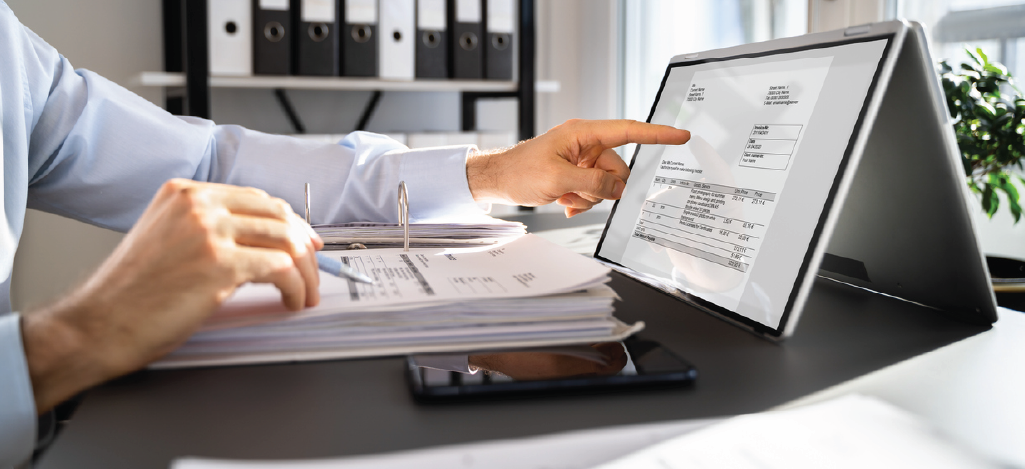Billing is crucial in the growth of any practice. But how can we improve it? Let's explore the benefits of text and email bill notifications!
Increasing revenue and lowering expenses are critical components to the success of a healthcare organization. Some may even take the stance that these components are more critical than ever. You have likely read several news reports about healthcare organizations experiencing significant losses due to changes in operating costs. Unfortunately, these financial challenges will continue to plague healthcare practices, especially small practices that have to account for other factors in addition to rising labor expenses, inflation, and a significant cut in Medicare payments used to treat patients diagnosed with COVID-19. While many practices have witnessed an increase in productivity, expenses are growing at a faster pace than reimbursements. So how can small practices effectively mitigate these challenging times? Enter the use of text and email bill notifications. Small practices are encouraged to look for ways to increase revenue and decrease costs. While achieving 100 percent reimbursement and on-time payments is next to impossible, every practice wants to gain as much revenue as possible within a certain timeframe. Medical billing and collections play a major role in the growth of any practice. However, 75% of providers are still using paper and manual processes for collections. Given that 75% of healthcare providers are using paper and manual processes, it should not be surprising to learn that 70% of patients receive their medical bills in the form of paper statements.
The Role of Digital Billing Communications

For many patients, paper-based billing is too slow and frustrating. In one study, 56% of patients revealed they prefer digital billing communications (i.e. email and text) and nearly 80% of these patients prefer to pay medical bills in one digital location. For these patients, paper-based billing is likely less effective. Unfortunately, this can lead to delays in payment and increased medical debt among patients.
This is why more small practices should implement text and email bill notifications to improve their revenue. HIPAA-compliant text and email bill notifications can be effective in ways that paper statements and phone calls simply cannot.
The Impact of Efficient Bill Notifications
Small medical practices face several challenges when it comes to managing their billing processes. Traditional bill notification methods, like mailing paper invoices, are time-consuming and can be expensive—especially if multiple notices must be sent. However, implementing text and email bill notifications has the potential to revolutionize your small practice's billing process. This can bring significant benefits to your practice and the patients you serve.
Some challenges that small practices may continue to face while using manual billing processes include:
The Time it Takes to Receive a Statement
Mailed medical invoices can take several days to reach a patient's mailbox. This can result in delays in payment and prolonged accounts receivable cycles.
The Costs Associated With Printing and Mailing
When you factor in the costs of printing, postage, and handling expenses associated with mailed invoices, the amount is mind-boggling. Considering the number of patients who still prefer to receive paper statements, the cost of printing these statements can significantly impact a practice's bottom line. You must also consider the administrative burden of managing physical medical invoices and the amount of time valuable staff consumes.
The Ability (or Inability) to Track and Follow Up
Traditional bill notifications don't offer real-time tracking mechanisms. This adds another barrier for small practices trying to monitor which patients have received and reviewed their invoices. This lack of visibility results in inefficiencies in follow-up processes.
Implementing text and email bill notifications has the potential to revolutionize medical billing processes, igniting a wave of positive change. When consumers receive “payment due” notifications through their preferred digital channels, 32% of them will pay that bill within 5 minutes of receiving a text notification and 25% will make the payment within five minutes when they receive it via email. This can lead to increased revenue because it can reduce the average payment rate.
The impact goes beyond just convenience. It's about empowering patients and giving them the tools to actively engage in their own healthcare financial journey. With text and email bill notifications, patients can gain a deeper understanding of their bills, ask questions, and receive additional information—all at their fingertips! This newfound transparency and communication strengthen the patient-provider relationship.
Benefits of Text and Email Bill Notifications

Imagine a world where there will be no delays or inefficiencies in the medical billing process. Text and email bill notifications have the power to take this dream into reality. By streamlining the billing cycle, text and email digital notifications make sure that invoices reach patients instantaneously. This can help in eliminating the agonizing wait that comes with a paper statement.
The sense of relief that comes with it will also be quickly noticeable. Many of your patients are already familiar with receiving and interacting with text/email messages, especially now that more businesses are using text and email communication mechanisms. You may be surprised at how many of your patients will welcome text and email bill notifications versus the traditional method.
But what makes text and email bill notifications so valuable?
Reduces Administrative Costs Associated with Manual Bill Follow-Ups
In a small medical practice, every cent counts. The burden of administrative costs associated with manual bill follow-ups can cripple small practices, draining resources and hindering growth. Using paper-based processes, practices spend hours manually following up with patients on unpaid bills, making phone calls, and sending more paper mail. By implementing text and email communication, automated reminders can be sent for outstanding bills, due dates, and payment plan options. This gets rid of the need for time-consuming manual follow-ups.
Increases Timely Payments and Reducing Outstanding Balances
As a small practice, you know all too well that financial stability is a precarious balancing act. However, implementing text and email bill notifications can tip the scales in your favor.
These digital reminders will give patients a slight nudge toward timely payments. This, in turn, reduces the burden of outstanding balances that weigh heavily on the shoulders of healthcare providers. The wave of relief and optimism that comes from increased cash flow can breathe new life into your practice, empowering your entire practice to expand its services, invest in cutting-edge technologies, and eventually deliver better care to all patients.
Improves Patient Engagement and Satisfaction
In the heart of every healthcare provider lies a burning desire to connect with their patients. Text and email bill notifications can serve as the catalysts you need. When you engage patients conveniently and interactively, these notifications can bridge the gap between provider and patient—fostering a sense of trust, understanding, and mutual respect. The knowledge that patients can easily access more information, request clarification, and explore payment options leaves both parties with a renewed sense of satisfaction, stamping a lasting bond that transcends beyond healthcare.
Overcoming Challenges and Concerns

Ensuring patient privacy and data security should always be on the mind of healthcare providers when implementing digital communication for billing purposes. Small medical practices can proactively address potential patient concerns by implementing strong privacy measures and transparent communication about data protection practices. By employing industry-standard security protocols and encryption methods, practices can safeguard patient information, providing peace of mind to patients.
Communicating these security measures to patients through clear messaging fosters trust, and it reassures them that their sensitive information is handled with the utmost care. By emphasizing adherence to HIPAA regulations and implementing stringent privacy policies, practices can effectively address patient concerns. Since integrating text and email bill notifications into existing systems can present technical challenges for small medical practices, every practice must take the right approach and have the proper support.
Staff members should have the training and support they need before using the new communication tools. Training sessions, workshops, ongoing technical support, etc. can all arm staff with the knowledge and skills they need to navigate the system with ease. When the time comes for you to introduce text and email communication for billing, you can set up dedicated email addresses or phone lines specifically for billing-related questions. This ensures your patients have a direct and reliable means of communication with someone from your practice. Practices should prioritize timely responses to patient inquiries, addressing concerns, and providing support as needed.
Implementing Text and Email Notices
More and more patients are embracing technology to make payments and communicate. That is why healthcare providers must use technology to improve billing and revenue cycle performance. It is important to have an established system that allows your practice to send important billing information to your patients.
By implementing solutions like BillFlash eBill Notices, your practice can streamline its billing processes and enhance patient communication with ease. Efficient text and email bill notifications not only save time and resources but also have the potential to increase revenue by reducing late payments and improving cash flow. We encourage small medical practices like yours to embrace services like BillFlash eBill Notices to optimize your revenue generation and provide a seamless billing experience to your patients.
Schedule a demo today!

